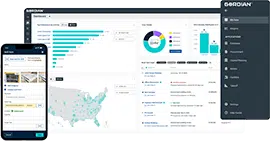Creative Contracting During the Construction Labor Shortage
A recurring theme in our conversations with procurement professionals and in our newsfeeds has been the construction labor shortage. Contractors are optimistic about the construction industry, but also pinched by a tight labor market and challenged to find available, skilled workers. The shortage is impacting construction timelines, raising costs and causing safety concerns across the country.
Breaking Down the Labor Shortage
Mark Bailey has worked in the construction industry for over three decades and is currently the Director of Strategic Initiatives at TMG Construction Corporation. He says that the shortage of workers in the construction industry is “a major one, and it’s not anticipated to get any better.” Mark also gives us a little history lesson.
“After the Great Recession, many professionals—think project managers and superintendents—left the industry and did not return. In other words, the economy started coming back and they had found other fields to join.”
To make the problem worse, the next generation of workers are no longer considering construction as a viable career option. There is a stigma on the construction industry—long hours in the hot sun, making little money for bone-breaking manual labor and safety hazards. An increasing number of high-schools are shutting down shop classes and mentors are steering graduates to bachelor’s degrees and white-collar careers. As older workers are settling down for retirement, there isn’t anyone ready to take their positions. That absence is being felt.
Feeling the Impact From Coast to Coast
As Purchasing Manager for the City of Everett, Washington, Theresa Bauccio-Teschlog matches the needs of her internal customers with the offering of the local business community—including construction services. Theresa illuminated the “severe lack of subcontractors” in the state of Washington. “If you look around you’ll see a lot of cranes; that’s a sign of large construction projections. All the subcontractors are tied up on those jobs.”
As Director of Cooperative Services for BuyBoard, Steve Fisher knows first and second-hand about this predicament for many public procurement teams. “I think the challenge has always been getting qualified contractors. With Texas being a big state, it’s hard to find what are called ‘regional contractors.’ It’s great to find them in the metroplexes, but those guys aren’t going to go out to west Texas and do a job. So, trying to find enough local contractors that are more regionally based is a challenge.”
The fact that city planning and maintenance is feeling the effects of the contractor shortage is troubling. The work that needs to be done effects the safety and prosperity of our communities—and our children. The struggle is real. The Executive Director/CEO of Sourcewell, Chad Coauette, says “Across the board, we hear that accessing qualified contractors is a struggle. This is a big problem for the education sector, whether it’s K-12 or higher education. School lets out at the end of May or beginning of June and there’s a specific startup date. Finding contractors to do a bunch of work in a tight window of time is challenging.”
The Q3 2018 Report from the USG Corporation and U.S. Chamber of Commerce Commercial Construction Index report shows that 88 percent of the contractors surveyed expect to feel at least a moderate impact from labor shortages over the next three years. So how are procurement professionals overcoming this industry-wide challenge to get work completed for their organizations?
Contract Creatively
Our industry professionals tell us that creativity, strategic planning and relationship building have helped them compensate for the shortage of qualified contractors. Procurement teams are thinking outside the box for alternative solutions. Gained during 17 years of local government experience, Theresa Bauccio-Teschlog’s measured, innovative approach to overcome the construction labor shortage in the City of Everett is noteworthy.
“To compensate for the shortage, we’re planning better and getting more creative with how to bid projects. We’re looking into how to bundle projects to make them more attractive. We’re also being intentional about when we send projects out for bid. Timing matters. Contractors are busy building during the spring and summer, so we have to get out to bid in the winter. It’s all about creativity.”
One way organizations can “bundle projects” is through an Indefinite Delivery Indefinite Quantity (IDIQ) contract that allows multiple projects to be completed through a single contract. Job Order Contracting (JOC) is an IDIQ contract for construction projects. JOC enables projects to start faster and for project owners and awarded contractors to become long-term partners, resulting in higher quality work and a better experience.
Fostering Partnerships Between Project Owner and Contractor
Miami-Dade County Public Schools started using JOC in 1991. Their Administrative Director, Francis Hoar, explained the school system’s switch to JOC from traditional construction procurement methods. “We found the process of engaging contractors for small projects was way too complex. It did not allow maintenance to effectively address emerging projects that need immediate results. The JOC concept addressed that need. What we wanted was a long-term relationship with a contractor that could be mobilized quickly and efficiently. Since it’s a performance-based delivery system, no one is entitled to any particular project, and you’re as good as the last project you completed.”
Fostering partnerships between contractors and project owners is very important. Theresa adds that entities need to build up a reputation of being easy to work with. “Contractors will decide to bid on your project based on how easy you are to work with.”
Randy Pederson, President of RAK Construction, speaks to this from a contractor’s perspective. “Our customers love Job Order Contracting. It’s easy, it’s fast, it’s transparent and it’s legit; it’s legal and above-board. Business has grown a lot since we’ve been involved in this process. We bring in more customers, new customers and repeat business.”
Make it Work
The earning potential and necessary skillset for a new workforce to build and manage construction projects is high and growing. Construction industry leaders and management teams are working to demolish the stigma of entry-level construction work, brick by brick. In the meantime, the labor shortage will continue to challenge teams who are required to procure construction services to complete maintenance and repairs. Strategic planning initiatives, innovative construction procurement methods, like JOC, and fostering partnerships between project teams and contractors will help overcome the labor shortage challenge.






